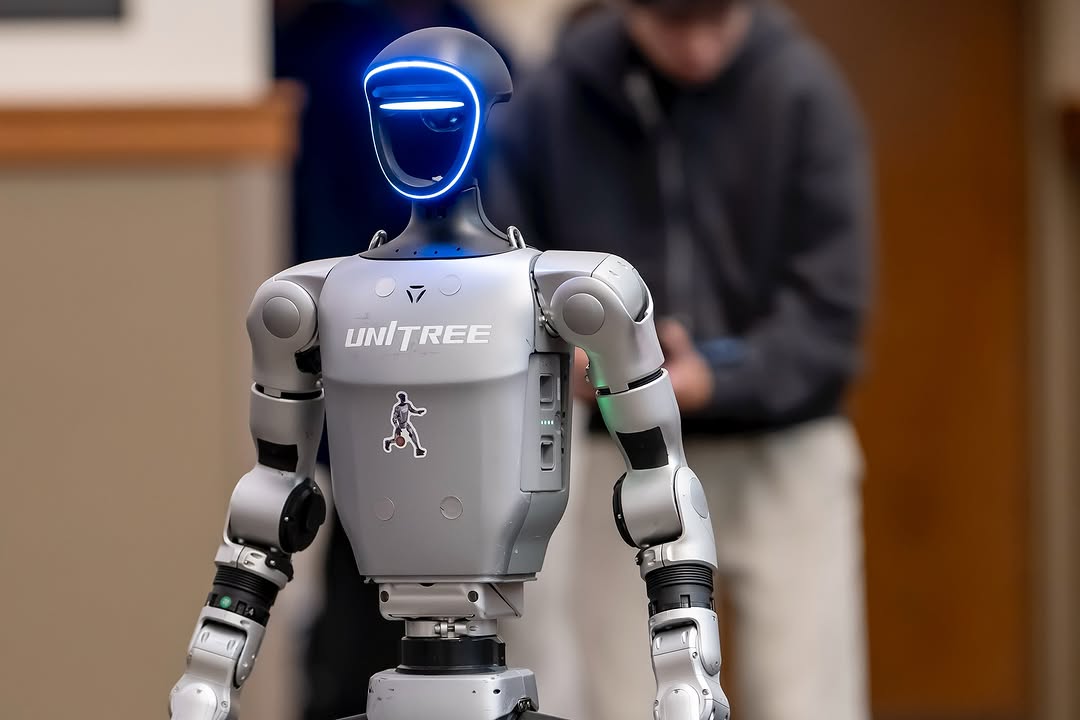Robot Rumble: How Unitree’s Iron-Fist Bots Are Shaking Up the Robotics World
Robot Rumble! Inside the Iron-Fist Tournament
Unitree Robotics recently stunned tech fans with “Iron Fist King: Awakening!”, the world's first-ever boxing match between humanoid robots. Held beside their new factory, four human-controlled Unitree G1 bots duked it out in fast-paced martial arts-style bouts. Each two-minute round awarded points for strikes: hands scored one, legs three. Knockdowns and eight-second timeouts added thrills. The winner, “AI Strategist,” managed three consecutive knockouts to take the title—bringing the fight to life in a spectacle that blended athletic drama with robotics innovation.
Meet the G1: Agile, Affordable, and Astonishing
At 4.3 ft tall and weighing 77 lb, the Unitree G1 is built for nimble combat. With 23 degrees of freedom and powerful knee joints, it throws hooks, side kicks, kip‑ups and side flips—all driven by human operators using motion controllers or voice commands. It reaches speeds of 4.5 mph, folds up for portability, and costs around $16,000—making advanced humanoid tech more accessible than the flagship H1 model. Powered by the LAFAN1 motion-capture dataset, the G1 translates human athleticism into robotic performance.
Related: Robots Race Humans in Historic Beijing Half-Marathon
Related: Ati Motors Secures $20 Million to Lead Global Robotics Revolution
Testing Real‑World Limits—And Learning Every Punch
The Iron‑Fist tournament did more than entertain—it put the G1’s sensors, motors and algorithms to the test. Each punch, dodge and fall measured system limits under real pressure. Observers noted a few reaction lags and post-hit wobbles, but overall, the robots handled live combat admirably. As Zhou Di from the China Computer Federation said, they can now “predict opponents’ moves and adjust in real time”, marking a significant leap in humanoid robotics.
Unitree’s CEO, Vision, and Massive Valuation
Unitree was founded in 2016 by Wang Xingxing, a self-taught engineer turned entrepreneur. The Hangzhou-based startup specializes in quadruped and humanoid robots, with over 60 percent of the global market for robotic dogs. Profitable since 2020, Unitree is raising pre-IPO funds at a valuation between $1.6 and $2 billion . Wang, who spoke at high-level economic forums alongside China’s top business leaders, aims to push robotics from novelty acts—like dancing dogs at the Spring Festival Gala—to full industrial utility, with AI‑powered humanoids working in factories, logistics, and beyond.

Strengths, Controversies, and China’s Global Robot Push
Unitree excels in cost-effective hardware: its electric-actuated robots are cheaper and easier to scale than hydraulic rivals like Boston Dynamics. But it faces scrutiny: Chinese military exercises have reportedly featured armed quadruped robots, though Unitree denies direct military contracts. With $13 billion in government-backed investment into AI and robotics, China is fast-becoming a global leader —Unitree sits at the heart of that push.
Related: "The Robot Decade”: Nvidia CEO Declares AI-Driven Machines Will Rule the 2020s
What Comes Next for Unitree and Robotics?
Unitree's next frontier is mass production of AI-driven humanoids, powered by a unified “end-to-end” AI model that integrates vision, touch, movement and decision-making. The company has already developed prototypes like the G1 and H1, and is expected to unveil more advanced models in the coming year. Wang envisions a future where robots work alongside humans in everyday environments—factories, agriculture, even building entire cities.
Final Knockout: Unitree’s Place in the Robotics Revolution
From the ring to real-world deployment, Unitree is rewriting the playbook on humanoid robotics—making sleek, agile, and affordable machines a mass-market reality. With a $2 billion valuation, profitable operations, aggressive AI promise, and heavy national backing, the company is well-positioned to challenge the likes of Boston Dynamics and reshape industries worldwide. The question is: how fast can they scale, and how far can they take us?
Related: Inside the Lab: How Unitree Is Engineering the Future of Accessible Robotic Mobility













